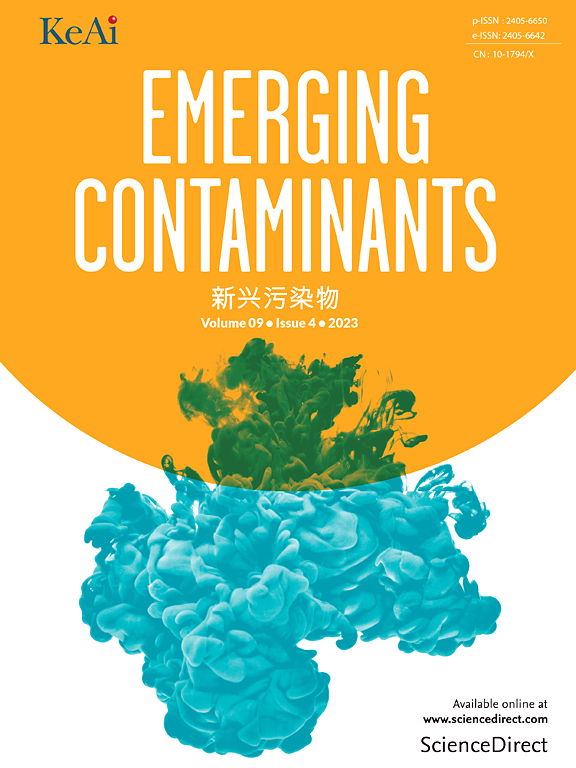Non-targeted screening and characterization of organic pollutants in wastewater from an industrial park in China
IF 6.9
2区 环境科学与生态学
Q1 ENVIRONMENTAL SCIENCES
引用次数: 0
Abstract
Industrial parks are significant sources of complex water pollution, making it challenging to trace pollutant origins and ensure water quality. This study established a non-targeted screening workflow and compound persistence, mobility, and toxicity (PMT) assessment method to identify and characterize organic pollutants in wastewater from a chemical industrial park in Central China. Among the 255 compounds identified, some aromatic ketones and phthalate esters raised concerns due to their potential health effects. PMT assessment revealed 2 PMT/vPMT (v = very) compounds, 36 potential PMT/vPMT compounds, and 50 potential PT/vPT or PM/vPM compounds. Exposure-discharge modeling indicated the wastewater treatment plant's limited efficiency in treating the predominantly aromatic pollutants. Traceability analysis identified 23 characteristic pollutants from eight enterprises. This study provides valuable insights for identifying unknown compounds, evaluating industrial wastewater discharge standards, and enabling precise management of water pollution in industrial parks.
某工业园区废水中有机污染物的非靶向筛选与表征
工业园区是复杂水污染的重要来源,这使得追踪污染源和确保水质具有挑战性。本研究建立了一种非靶向筛选流程和化合物持久性、迁移性和毒性(PMT)评估方法,以识别和表征华中某化工园区废水中的有机污染物。在鉴定出的255种化合物中,一些芳香酮和邻苯二甲酸酯因其潜在的健康影响而引起关注。PMT鉴定发现2个PMT/vPMT (v = very)化合物,36个潜在PMT/vPMT化合物,50个潜在PT/vPT或PM/vPM化合物。暴露-排放模型表明,污水处理厂在处理主要的芳香族污染物方面效率有限。溯源分析确定了来自8家企业的23种特征污染物。该研究为识别未知化合物、评估工业废水排放标准以及实现工业园区水污染的精确管理提供了有价值的见解。
本文章由计算机程序翻译,如有差异,请以英文原文为准。
求助全文
约1分钟内获得全文
求助全文
来源期刊

Emerging Contaminants
Medicine-Public Health, Environmental and Occupational Health
CiteScore
10.00
自引率
6.70%
发文量
35
审稿时长
44 days
期刊介绍:
Emerging Contaminants is an outlet for world-leading research addressing problems associated with environmental contamination caused by emerging contaminants and their solutions. Emerging contaminants are defined as chemicals that are not currently (or have been only recently) regulated and about which there exist concerns regarding their impact on human or ecological health. Examples of emerging contaminants include disinfection by-products, pharmaceutical and personal care products, persistent organic chemicals, and mercury etc. as well as their degradation products. We encourage papers addressing science that facilitates greater understanding of the nature, extent, and impacts of the presence of emerging contaminants in the environment; technology that exploits original principles to reduce and control their environmental presence; as well as the development, implementation and efficacy of national and international policies to protect human health and the environment from emerging contaminants.
 求助内容:
求助内容: 应助结果提醒方式:
应助结果提醒方式:


